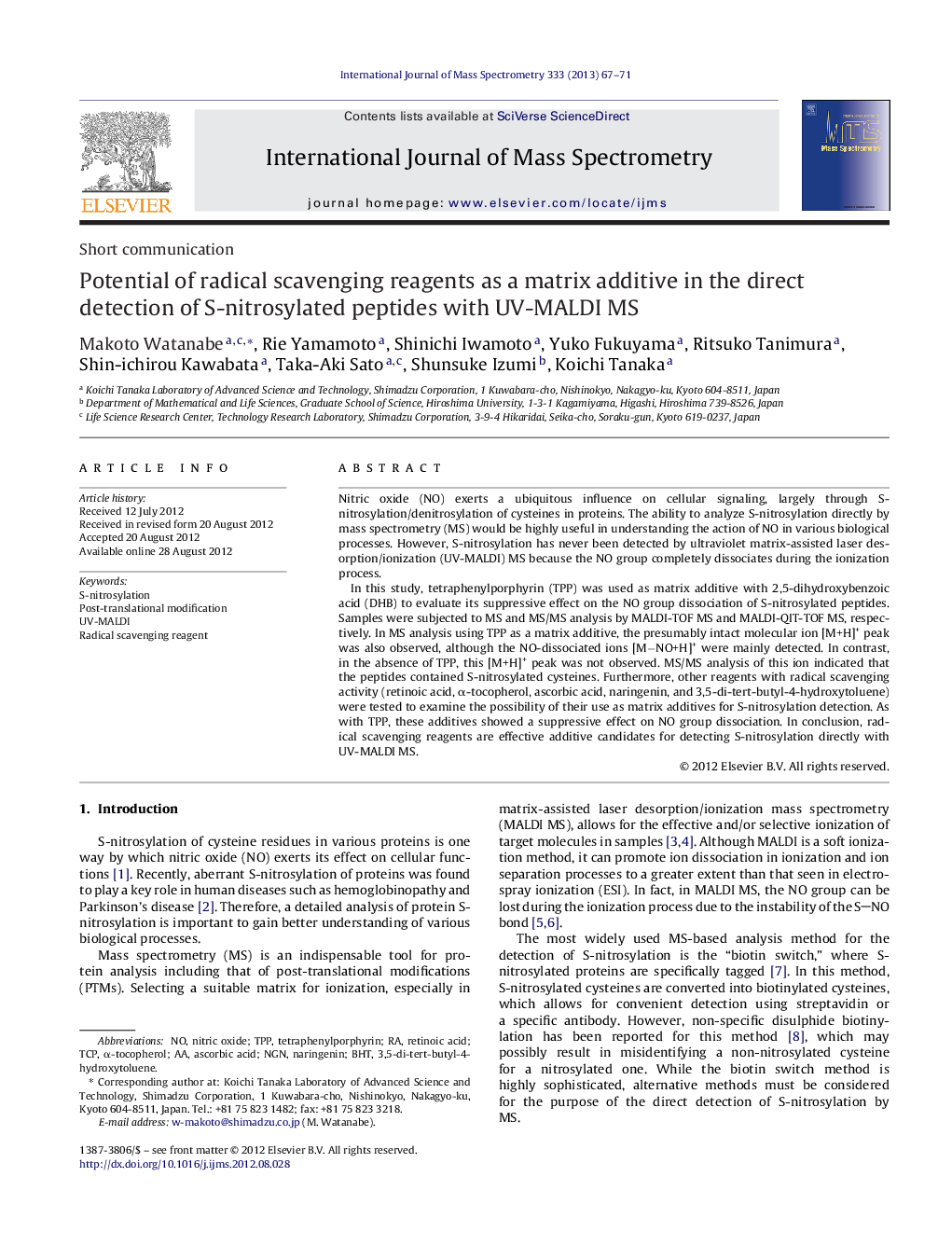| کد مقاله | کد نشریه | سال انتشار | مقاله انگلیسی | نسخه تمام متن |
|---|---|---|---|---|
| 1192730 | 1492287 | 2013 | 5 صفحه PDF | دانلود رایگان |

Nitric oxide (NO) exerts a ubiquitous influence on cellular signaling, largely through S-nitrosylation/denitrosylation of cysteines in proteins. The ability to analyze S-nitrosylation directly by mass spectrometry (MS) would be highly useful in understanding the action of NO in various biological processes. However, S-nitrosylation has never been detected by ultraviolet matrix-assisted laser desorption/ionization (UV-MALDI) MS because the NO group completely dissociates during the ionization process.In this study, tetraphenylporphyrin (TPP) was used as matrix additive with 2,5-dihydroxybenzoic acid (DHB) to evaluate its suppressive effect on the NO group dissociation of S-nitrosylated peptides. Samples were subjected to MS and MS/MS analysis by MALDI-TOF MS and MALDI-QIT-TOF MS, respectively. In MS analysis using TPP as a matrix additive, the presumably intact molecular ion [M+H]+ peak was also observed, although the NO-dissociated ions [M−NO+H]+ were mainly detected. In contrast, in the absence of TPP, this [M+H]+ peak was not observed. MS/MS analysis of this ion indicated that the peptides contained S-nitrosylated cysteines. Furthermore, other reagents with radical scavenging activity (retinoic acid, α-tocopherol, ascorbic acid, naringenin, and 3,5-di-tert-butyl-4-hydroxytoluene) were tested to examine the possibility of their use as matrix additives for S-nitrosylation detection. As with TPP, these additives showed a suppressive effect on NO group dissociation. In conclusion, radical scavenging reagents are effective additive candidates for detecting S-nitrosylation directly with UV-MALDI MS.
Figure optionsDownload high-quality image (184 K)Download as PowerPoint slideHighlights
► S-nitrosylated peptides were observed by UV-MALDI using radical scavenging reagents, such as tetraphenylporphyrin and retinoic acid, as a matrix additive.
► MS/MS analysis of S-nitrosylated peptides enabled the modification sites to be determined.
► These reagents could act as radical scavengers in the MALDI process, allowing for the direct detection of S-nitrosylation.
Journal: International Journal of Mass Spectrometry - Volume 333, 1 January 2013, Pages 67–71